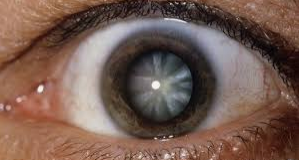Eye Disorders Multiple Choice Questions :-
1. This vision disease is more common in adults over 60 years of age and in people with blue eyes. The symptoms are decreased central vision and the image larger in one eye. Physical examination shows hyaline (drusen) deposits on the retina near macula, gray green areas of pigmentation under the retina, and decreased visual acuity.
- Diabetic retinopathy
- Retinal detachment
- Glaucoma
- Central retinal artery occlusion
- Macular degeneration
2. Sudden loss of vision with a red painful eye may indicate acute-angle glaucoma.
- False
- True
3. Physical findings show abnormalities of the retinal vessels. The patient may have a history of premature birth (less than 36 weeks), had oxygen administered or may be a twin.
- Nystagmus
- Retinopathy of prematurity
- Injury
- Retinoblastoma
- Optic nerve hyperplasia
4. Unilateral redness of the eye is more likely to indicate an allergy or underlying systemic process.
- False
- True
5. Severe anxiety can produce a transient loss of vision or a perceived loss of vision.
- False
- True
6. The symptoms are bilateral with mild stinging in the eyes. Physical examination shows peripheral injection, no discharge with visual acuity okay.
- Episcleritis
- Keratitis
- Sub conjunctival hemorrhage
- Hyphema
- Sclerotic
7. Physical examination shows venous dilation and retinal hemorrhages. The patient has a history of diabetes, floaters and gradual vision loss.
- Central retinal artery occlusion
- Glaucoma
- Mac ular degeneration
- Retinal detachment
- Diabetic retinopathy
8. The symptoms are a sensation of flashing light accompanied by a shower of floaters:
there may be a history of trauma to the head or face. Physical findings show the retina markedly elevated: appears gray with dark blood vessels and may lie in folds.
- fl Central retinal artery occlusion
- Diabetic retinopathy
- Glaucoma
- Macular degeneration
- Retinal detachment
9. Refractive amblyopic is anything that prevents an image from being received clearly by the retina.
- False
- True
10. The patient complains of decreased vision in one eye. There may be a history of premature birth. Down syndrome. cerebral palsy or hydrocephalus.
- Strabismus
- Cataracts
- Optic neuritis
- Refractive errors
- Amblyopic

11. A ton meter is a device used to detect the presence of abrasions or a foreign body on the corneal surface of the eye.
- True
- False
12. Eye discharge that is seen 5 to 30 days postpartum may indicate gonococcus infection of the eye.
- False
- True
13. Examination of the patient shows a swelling of the eyelid with fever and redness. The conjunctiva is clear, the eye moves freely and vision is not impaired.
- Orbital cellulites
- Herpetic keratitis
- Per orbital cellulites
- Corneal abrasion I foreign body
14. The patient has a swelling and redness around the lachrymal sac of the eye: there is some tearing and some pus through the pomatum. There was an acute onset of symptoms and pain.
- Dacryocystitis
- Blepharitis
- Hordeolum / sty
- Entropies / ectropion
15. This patient with eye problems has a history of infection or chronic inflammation! mild to moderate pain, photophobia and tearing.
- Craniopharyngioma
- Congenital infections
- Chemical burn
- Optic nerve glioma
- Uveitis
16. The infant has bilateral red eyes with the first 24 hours.
- Chemical conjunctivitis
- N. gonorrhea conjunctivitis
- Bacterial conjunctivitis
- viral conjunctivitis
- Allergic conjunctivitis
17. There is a decrease in vision with bacterial or allergic conjunctivitis.
- True
- False
18. Uveitis is a general term used to describe inflammatory activity of the iris, culinary body and choroid.
- True
- False
19. The damage is unilateral and is a result of trauma to the eye. Physical findings show red blood cells in anterior chamber: decreased visual acuity: with pupil irregular and poorly reactive.
- Episcieritis
- Hyphema
- Keratitis
- Sclerotic
- Sub conjunctivas hemorrhage
20. A single eye is affected with moderate aching pain and photophobia. There is tearing, the affected pupil is smaller, the cornea is normal and there is ciliary flush
- lritis
- Herpetic keratitis
- Per orbital cellulites
- Corneal abrasion / foreign body
- Orbital cellulites
21. Bacterial conjunctivitis causes the most pain.
- True
- False
22. Painless vision loss is associated with macular degeneration and retinal detachment.
- False
- True
23. The patient is a child 2 years old or younger. Physical examination of the eyes show partial or absent red reflex and strabismus.
- Nystagmus
- Retinoblastoma
- Optic nerve hyperplasia
- Injury
- Retinopathy of prematurity
24. The physical findings include swelling of the eyelid: indurate lesion with central pus and surrounding erythema. The symptoms are unilateral and include pain.
- Chalazion
- Entropion / ectropion
- Hordeolum / sty
- Dacryocystltis
- Blepharitis
25. There are family reports of child’s eyes cross. Physical findings show extra ocular movements that are abnormal, and cover / uncover test is positive.
- strabismus
- Refractive errors
- Amblyopic
- Cataracts
- Optic neuritis